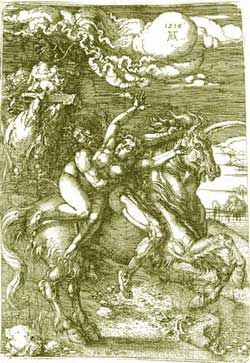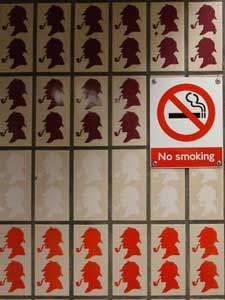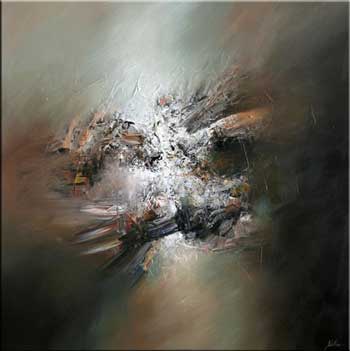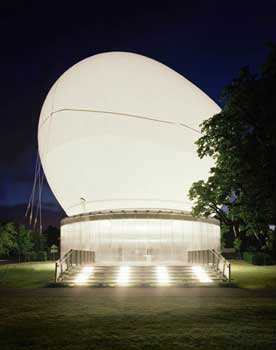2006-08-20
Pluto, still perched on its planetary precipice
Despite the draft definition released by the International Astronomical Union (IAU) on Wednesday that would have qualified Pluto's status as a planet and added three others, New Scientist reports that a competing proposal may yet see a return to the eight so-called 'classical' planets.
The IAU Planet Definition Committee had said anything that is not a star but that is round and independently orbits the Sun should be considered a planet, while any planet farther than Neptune should also be called a pluton. This would mean that the four rocky planets (Mercury, Venus, Earth, Mars) and four gas giants (Jupiter, Saturn, Uranus, Neptune) would be planets, as would Ceres (currently classified as an asteroid), Pluto, Charon and 2003 UB313 ('Xena'). The latter three would also be plutons, and an unknown number of other objects could also be recognised as planets and as plutons in future, depending on how strictly 'roundness' is defined.
On Friday, a group led by Julio Fernández from Montevideo's University of the Republic proposed that an additional criteria should be stipulated - that a planet should be 'by far the largest body in its local population'. If this was approved, the number of planets would return to eight and objects such as Pluto would be dwarf planets. It would be unlikely that any further unqualified planets would be added, since this would involve the discovery of a massive planet farther than Neptune.
The IAU votes on Thursday, but in the meantime a straw poll of astronomers at John Hopkins University in Baltimore, which was released the same day as the second proposal, threw up a range of interestingly conflicting opinions.
Of course this is more a matter of language than science, but I reckon we should return to eight 'proper' planets - much simpler (the textbooks would have to be rewritten either way!).
The IAU Planet Definition Committee had said anything that is not a star but that is round and independently orbits the Sun should be considered a planet, while any planet farther than Neptune should also be called a pluton. This would mean that the four rocky planets (Mercury, Venus, Earth, Mars) and four gas giants (Jupiter, Saturn, Uranus, Neptune) would be planets, as would Ceres (currently classified as an asteroid), Pluto, Charon and 2003 UB313 ('Xena'). The latter three would also be plutons, and an unknown number of other objects could also be recognised as planets and as plutons in future, depending on how strictly 'roundness' is defined.
On Friday, a group led by Julio Fernández from Montevideo's University of the Republic proposed that an additional criteria should be stipulated - that a planet should be 'by far the largest body in its local population'. If this was approved, the number of planets would return to eight and objects such as Pluto would be dwarf planets. It would be unlikely that any further unqualified planets would be added, since this would involve the discovery of a massive planet farther than Neptune.
The IAU votes on Thursday, but in the meantime a straw poll of astronomers at John Hopkins University in Baltimore, which was released the same day as the second proposal, threw up a range of interestingly conflicting opinions.
Of course this is more a matter of language than science, but I reckon we should return to eight 'proper' planets - much simpler (the textbooks would have to be rewritten either way!).
Labels: science
2006-08-14
Send back your 'guardian'
Compare and contrast:
1) Mahmood Ahmadinejad's new 'blog'
2) Stop censoring us
Comment by 'the blogfather of the Iranian blogs' Hossein Derakhshan.
As seen in today's Guardian.
1) Mahmood Ahmadinejad's new 'blog'
2) Stop censoring us
Comment by 'the blogfather of the Iranian blogs' Hossein Derakhshan.
As seen in today's Guardian.
2006-08-13
Silenced in America
Henry Porter writes for The Observer today about challenges to free speech regarding Israel and Palestine in the US.
Though Porter paints the situation with not too fine a brush, the firing of professor Douglas Giles from Roosevelt University, Chicago for allowing discussion of Zionism in a world religions class appears to be quite outrageous - particularly when you read Giles' own version of events. According to this, his department chair (Susan Weininger) had expressed concern that he had allowed a Muslim student to speak in a class on Judaism, and had called Palestinians 'animals' and 'not civilised'.
Porter also refers to the essay The Israel Lobby, which I posted on in April.
Though Porter paints the situation with not too fine a brush, the firing of professor Douglas Giles from Roosevelt University, Chicago for allowing discussion of Zionism in a world religions class appears to be quite outrageous - particularly when you read Giles' own version of events. According to this, his department chair (Susan Weininger) had expressed concern that he had allowed a Muslim student to speak in a class on Judaism, and had called Palestinians 'animals' and 'not civilised'.
Porter also refers to the essay The Israel Lobby, which I posted on in April.
Labels: justice, Palestine and Israel, politics, US
2006-08-12
Priceless in the pavilion
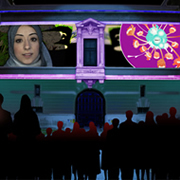
Priceless video projected against the side of the Science Museum on Exhibition Road (asiansinmedia.org)
Went to the launch of motiroti's collaborative project Priceless last night and, after the obligatory glugging of free booze and listening to artists' names being mispronounced by suitably gushing speakers in the Serpentine Pavilion, was actually quite moved by the video projection that followed on the side of the Science Museum.
It had been put together from workshops with members of local communities and invited guests who had been asked what they considered priceless, using items nominated by institutions along Exhibition Road as starting points. These ranged (perhaps predictably) from the mundane to the profound, but were all poignantly woven around threads of 'bigger' stories of migration, adventure and belief.
Events run in various venues until 27 August...
It had been put together from workshops with members of local communities and invited guests who had been asked what they considered priceless, using items nominated by institutions along Exhibition Road as starting points. These ranged (perhaps predictably) from the mundane to the profound, but were all poignantly woven around threads of 'bigger' stories of migration, adventure and belief.
Events run in various venues until 27 August...
2006-08-08
What was different this time?
From the San Francisco Chronicle on 21 July:
According to George Monbiot's Comment is free in today's Guardian:
More than a year ago, a senior Israeli army officer began giving PowerPoint presentations, on an off-the-record basis, to U.S. and other diplomats, journalists and think tanks, setting out the plan for the current operation in revealing detail. Under the ground rules of the briefings, the officer could not be identified.
In his talks, the officer described a three-week campaign: The first week concentrated on destroying Hezbollah's heavier long-range missiles, bombing its command-and-control centers, and disrupting transportation and communication arteries. In the second week, the focus shifted to attacks on individual sites of rocket launchers or weapons stores. In the third week, ground forces in large numbers would be introduced, but only in order to knock out targets discovered during reconnaissance missions as the campaign unfolded. There was no plan, according to this scenario, to reoccupy southern Lebanon on a long-term basis."
According to George Monbiot's Comment is free in today's Guardian:
Since Israel's withdrawal from southern Lebanon in May 2000, there have been hundreds of violations of the 'blue line' between the two countries. The United Nations Interim Force in Lebanon (Unifil) reports that Israeli aircraft crossed the line 'on an almost daily basis' between 2001 and 2003, and 'persistently' until 2006. These incursions 'caused great concern to the civilian population, particularly low-altitude flights that break the sound barrier over populated areas'. On some occasions, Hizbullah tried to shoot them down with anti-aircraft guns.
In October 2000, the Israel Defence Forces shot at unarmed Palestinian demonstrators on the border, killing three and wounding 20. In response, Hizbullah crossed the line and kidnapped three Israeli soldiers. On several occasions, Hizbullah fired missiles and mortar rounds at IDF positions, and the IDF responded with heavy artillery and sometimes aerial bombardment. Incidents like this killed three Israelis and three Lebanese in 2003; one Israeli soldier and two Hizbullah fighters in 2005; and two Lebanese people and three Israeli soldiers in February 2006. Rockets were fired from Lebanon into Israel several times in 2004, 2005 and 2006, on some occasions by Hizbullah. But, the UN records, 'none of the incidents resulted in a military escalation'.
On May 26 this year, two officials of Islamic Jihad - Nidal and Mahmoud Majzoub - were killed by a car bomb in the Lebanese city of Sidon. This was widely assumed in Lebanon and Israel to be the work of Mossad, the Israeli intelligence agency. In June, a man named Mahmoud Rafeh confessed to the killings and admitted that he had been working for Mossad since 1994. Militants in southern Lebanon responded, on the day of the bombing, by launching eight rockets into Israel. One soldier was lightly wounded. There was a major bust-up on the border, during which one member of Hizbullah was killed and several wounded, and one Israeli soldier wounded. But while the border region 'remained tense and volatile', Unifil says it was 'generally quiet' until July 12."
Labels: Palestine and Israel, politics, US
